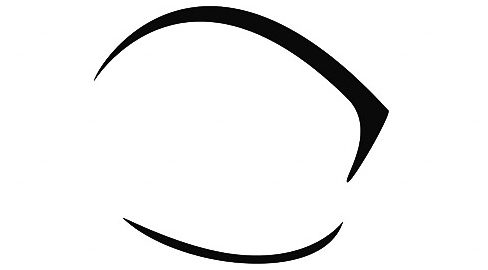A Cambridge Copycat?
 If my last post wasn’t fully convincing, let me offer up another good reason why publishing the Great American Novel might not be all it’s cracked up to be.
If my last post wasn’t fully convincing, let me offer up another good reason why publishing the Great American Novel might not be all it’s cracked up to be.
Kaavya Viswanathan.
Kaavya is a 19-year-old sophomore at Harvard and author of the latest entry into the skyrocketing literary genre know as “chic-lit.” Her book, entitled “How Opal Mehta Got Kissed, Got Wild and Got a Life,” focuses on a high school senior named Opal Mehta and her frantic attempts to get accepted into the school of her dreams and destiny–Harvard, naturally. It was properly feted in the New York Times when it debuted earlier this month, and all seemed well for the Harvard coed who was celebrating a six figure, two book deal and a DreamWorks movie contract.
Since that time, however, allegations by the Harvard Crimson that Ms. Viswanathan “borrowed” key ideas and phrases from two other previously published books, “Second Helpings” and “Sloppy Firsts” by Megan McCafferty, have shown up and crashed the party. Although she at first dodged the question, Ms. Viswanathan has since acknowledged that she inadvertantly “internalized” passages from the the books in question and used them in her latest work. She has issued an apology to Ms. McCafferty and her publisher, but apparently the apology was not accepted. Some of the disputed passages can be seen here.
It does not appear at first glance that Ms. Viswanathan’s alleged indiscretions are of the same magnitude as James Frey’s. She did, after all, produce a more or less original story and properly marketed her work as fiction rather than passing it off as a memoir.
However, this latest literary brouhaha does bring to light how difficult it may be to craft a truely “original” story and how easy it has become, given the rapid expansion of information via the internet and almighty Google, to spot potential plagiarism.
I’m wondering how many pleasing phrases I may have “inadvertantly” lifted from other sources over the years and used in my own writings. I’m also curious as to what you think about Ms. Viswanathan’s explanation. Is it possible to “internalize” and unwittingly use that many seemingly parallel passages, or is it more likely that Ms. Viswanathan is a “Cambridge Copycat” and had the works in question sitting in front of her as she wrote her own book?
Oh well, like I said, it all seems like another cautionary tale writ large across the American cultural landscape. The moral of the story? Stick to the blog–nobody ever reads it anyway.
Tomorrow: The much anticipated (heh) Part III of my series, “Blogging–The Wonder Years.” You don’t want to get miss it and get “caught short.”
—————————————————————————
Update 4/28/06
Little, Brown and Company, the publisher of Ms. Viswanathan’s book, has pulled the disputed novel from store shelves and retailers until the plagiarized passages can be excised and revised. Megan McCafferty states that she is “not seeking restitution in any form” and hopes that both she and Ms. Viswanathan can put the incident behind them and move on in their careers.
Not a bad resolution–no nasty lawsuit, Ms. McCafferty’s work and name remain intact (and her compassion to a young emerging writer will not doubt help her reputation), and Ms. Viswanathan learns the kind of lesson that they don’t teach at Harvard these days. Doris Kearns Goodwin seems to have recovered quite nicely, so chances are she will too.
Coming soon, the memoir: “How Kaavya Viswanathan Got Caught, Got Wise and Got a Lesson.”
5 Comments
Comments are closed.

contratimes
MTEG,
I am glad you posted this: I was sure to work on this today if you hadn’t. Thanks! Of course, you must have assimilated, internally/subliminally, my intent, hidden, no doubt, in the elegance of my exquisite comments here. Hence, you, my friend, are a plagiarist of an almost paranormal sort: You are Mike the Seeing-Eye Guy: I am your pupil; you see right through me; you see yourself (inverted, of course).
But seriously, thanks.
BG
mike the eyeguy
BG–
So sue me!
Or at least forgive me. Please?
Ah, go ahead and blog on it, there’s enough there for everybody. But, as Sting once said, “I’ll be watching you,” lest there be any egregious “internalization” showing up on the pages of Contratimes!
Ya know, the whole inverted thing keeps tripping me up, and I’m the one who’s supposed to understand it…
contratimes
Did I trip you up on the “inverted” thing? I am assuming (and I am no optician), that light passes through the pupil and is inverted on the rear wall (cornea) of the eye. Or are you just tripped up by the physics, the “why?” of that amazing phenomenon? Well, I am blown away by it.
What do you know about a cat’s eye? What is projected on their corneas? Does the cat’s iris/pupil make for a ultra wide-angle lens and image? What does that aperture do to light received?
I have this theory, this totally self-made theory. You know when you move something through your vision it begins to blur at a certain speed (you can’t move your eyes fast enough?), and it remains blurred the faster it goes? I wonder if the speed at which a thing begins to blur is faster for some people than others. Was the blur speed for Ted Williams higher than some less able batters? Was his “shutter speed” faster than some non-athlete’s? If so, what of the cat’s eyes: for cats surely appear to see things acutely, almost as if what they see does not blur at all, but is always sharp, clear, even almost slowed down.
I guess what I am asking is whether there is such a thing as a “shutter speed” to vision (a blur factor), and do some eyes handle movement better than others? Is that a function of the eye, or the brain, or both?
Why am I asking you this stuff? I have no idea.
Peace.
BG
mike the eyeguy
Bill–
Hey, someone needs to back off on that caffeine!
The convex lens of the eye(shaped just a camera lens) which is situated just behind the iris inverts the image so that it falls upside down upon the retina. From there, the image travels back to the visual cortex where it is reoriented and visualized in the correct position.
The problem I have is that I often use a 20 diopter lens with a certain type of ophthalmoscope to look at the back of the eye. It inverts and reverses the image, so I’m constantly having to remind myself that what I’m seeing has to be re-oriented when I describe it in the chart.
Your musings on “blur speed” have a name–tracking. With a combination of various types of eye movements such as saccades (quick & jerky) and smooth pursuits (slower & smooth) an individual is able to follow a moving object. Tracking depends on all the parts of the visual system, from cornea to cortex, and, yes, some people track better than others and experience “less blur” because their eyes are on the moving target for a longer period of time.
Ted Williams supposedly had 20/10 vision and said that he could “count the seams on the ball.” Perhaps a little exaggeration there, but studies of baseball players do show that those who are able to see the seams after the ball leaves the pitcher’s hand make more contact and hit safely more often. I guess you could say that they are able to “slow down” the image more than others.
Once the ball gets to within a few feet of the plate (the hitter has long since either committed to swing or held up) nobody is able to track the ball. If you watch a batter’s eyes closely as they make contact, you’ll see that they are focused not on the ball but several feet in front of the plate–the last point at which they actually were on target with the ball (that’s why a ball that breaks at the last possible second is so effective).
Also, tracking is trainable (many MLB teams have optometrists who specialize in sports vision) and there is a growing market for so called “super vision” in the form of special contacts, glasses and customized LASIK treatments.
Cats eyes are designed for a wide field view and superb night vision (that slit iris dilates widely at night). If kitty is right next to your face, all she sees is a blurry mug!
mike the eyeguy
And it took all of the above for Kaavya Viswanathan to “see” the error of her ways…